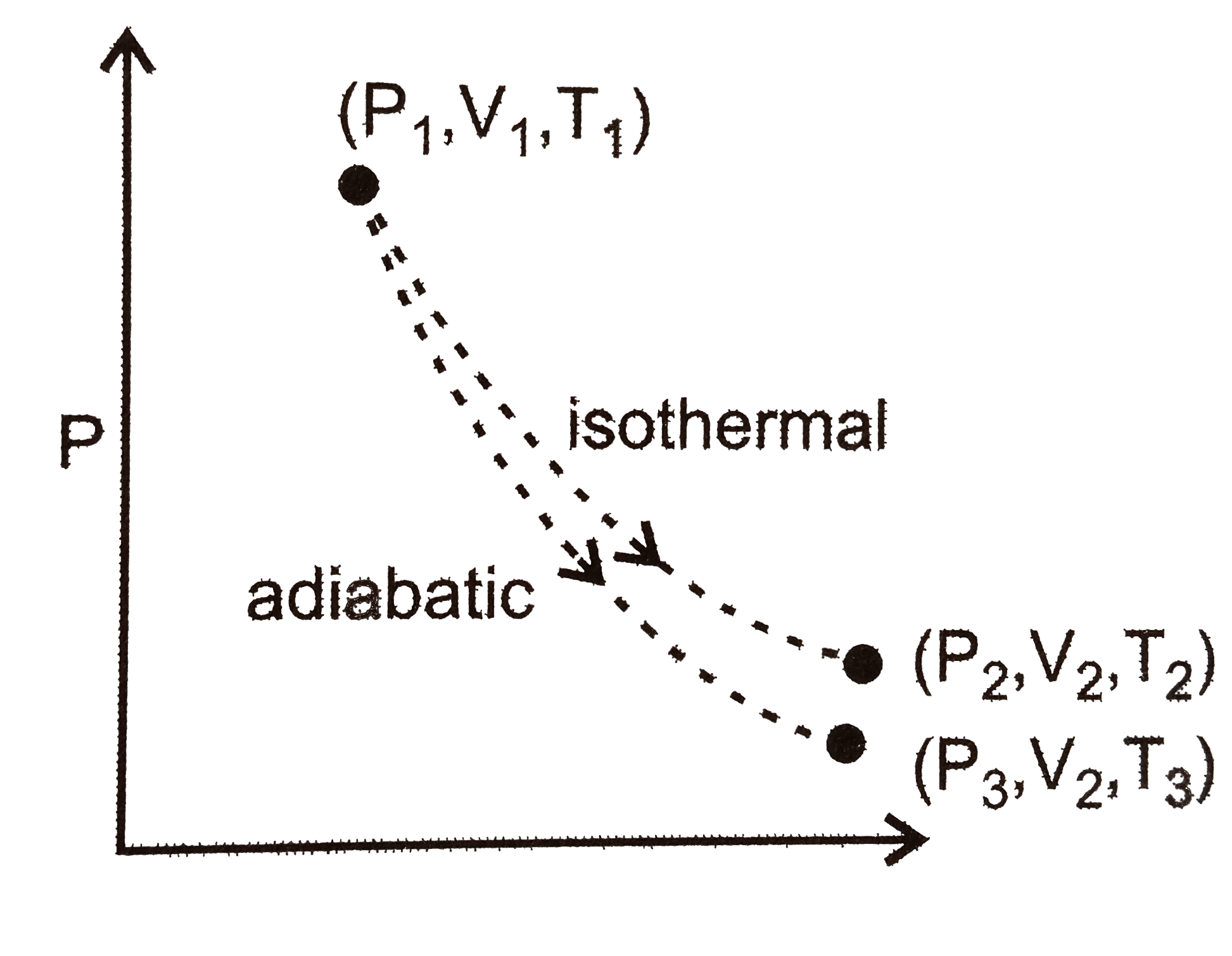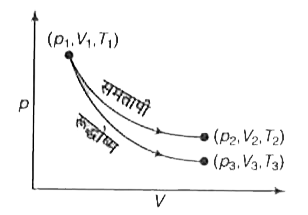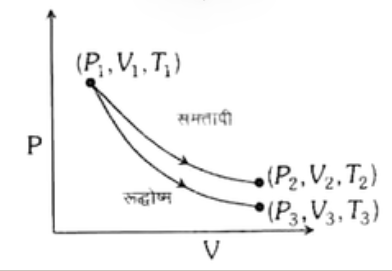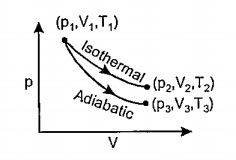This question has Statement I and Statement II. Of the four choices given after the Statements, choose the one that best describes the two Statements.
Statement-I : The magnitude of the work involved in an isothermal expansion is greater than that involved in an adiabatic expansion.
Statement-II : P-V curve (P on y-axis and V on x-axis) decrease more rapidly for reversible adiabatic expansion compared to reversible isothermal expansion starting from same initial state.Solution in Bengali
Statement-I is true, Statement-II is true, Statement-II is a correct explanation of Statement-I
Statement-I is true, Statement-II is true, Statement-II is not a correct explanation of Statement-I
Statement-I is true, Statement-II is false.
Statement-I is false, Statement-II is true.
The correct Answer is:A
Step by step video, text & image solution for This question has Statement I and Statement II. Of the four choices given after the Statements, choose the one that best describes the two Statements. Statement-I : The magnitude of the work involved in an isothermal expansion is greater than that involved in an adiabatic expansion. Statement-II : P-V curve (P on y-axis and V on x-axis) decrease more rapidly for reversible adiabatic expansion compared to reversible isothermal expansion starting from same initial state. by Chemistry experts to help you in doubts & scoring excellent marks in Class 11 exams.
Topper's Solved these Questions
Similar Questions
A 1000 mL sample of a gas at −73∘C and 2 atmosphere is heated to 123∘C and the pressure is reduced 0.5 atm. What will be the final volume ?
01:43View SolutionStatementI: Work done by a gas in isothermal expansion is more than the work done by the gas in the same expansion adaibatically.
Statement II: Temperature remains constant in isothermal ecpansion but not in adiabatic expansion.11:23View SolutionThe reversible expansion of an ideal gas under adiabatic and isothermal conditions is shown in the figure. Which of the following statement(s) is (are) correct?
 04:07View Solution
04:07View SolutionStaetement -1: The magniyude of the work involed in an isothermal expansion is greater than that involved in an adiabatic expansion. Statement -2: P-v cure (pon y -axas and V on X-axas) decrease more repidly for reversible asiabatic expansion compared to reversible isothermal expansion starting from same initial state.
04:07View SolutionStaetement -1: The magniyude of the work involed in an isothermal expansion is greater than that involved in an adiabatic expansion.
Statement -2: P-v cure (pon y -axas and V on X-axas) decrease more repidly for reversible asiabatic expansion compared to reversible isothermal expansion starting from same initial state.02:06View SolutionThese question consists of two statements each, printed as Statement-I and Statement-II . While answering these Question you are required to choose any one of the following four responses. Statement -I : Due to adiabatic expansion , temperature of an ideal gas always decreases. Statment -II : For an adiabatic expansion DeltaU =W .
05:11View Solutionदिए हुए रेखाचित्र में एक आदर्श गैस के लिए रूद्धोष्म (adiabatic) और समतापी (isothermal) अवस्थाओं में उत्क्रमणीय प्रसरण (reversible expansion) दिखाया गया है। निम्नलिखित प्रकथनों में से कौन-सा कथन सही है/हैं?
 06:00View Solution
06:00View Solutionदिये हुए रेखाचित्र में एक आदर्श गैस के लिए रूद्धोष्म (adiabatic) और समतापी (isothermal) अवस्थाओं में उत्क्रमणीय प्रसार (reversible expansion) दिखाया गया है। निम्नलिखित प्रकथनों में से कौन प्रकथन सही है/ हैं
 01:42View Solution
01:42View SolutionStatement-I : The amount of work done in the isothermal expansion is greater than work done in the adiabatic system for same final volume.
Statement-II: In the adiabatic expansion of a gas temperature and pressure both decrease due to decrease in internal energy of the system.05:40View SolutionThe reversible expansion of an ideal gas under adiabatic and isothermal conditions is shown in the figure. Which of the following statements(s) is (are) correct?
02:12View SolutionStaetement -1: The magniyude of the work involed in an isothermal expansion is greater than that involved in an adiabatic expansion.
Statement -2: P-v cure (pon y -axas and V on X-axas) decrease more repidly for reversible asiabatic expansion compared to reversible isothermal expansion starting from same initial state.02:22View SolutionThis question has Statement I and Statement II. Of the four choices given after the Statements, choose the one that best describes the two Statements.
Statement-I : The heat absorbed during the isothermal expansion of an ideal gas against vacuum is zero.
Statement-II : The volume occupied by the molecules of an ideal gas is zero.03:17View SolutionThis question has Statement I and Statement II. Of the four choices given after the Statements, choose the one that best describes the two Statements. Statement-I : Entropy change in reversible adiabatic expansion of an ideal is zero. Statement-II : The increase in entropy due to volume increase just compensate the decrease in entropy due to fall in temperature.
01:55View SolutionThis question has Statement I and Statement II. Of the four choices given after the Statements, choose the one that best describes the two Statements.
Statement-I : Internal energy of a real gas may change during expansion at constant temperature.
Statement-II : Internal energy of a real gas is a function of temperature and volume.04:05View SolutionThe reversible expansion of an ideal gas under adiabatic and isothermal conditions is shown in the figure. Which of the following statement(s) is (are) correct ?
 06:43View Solution
06:43View Solution

